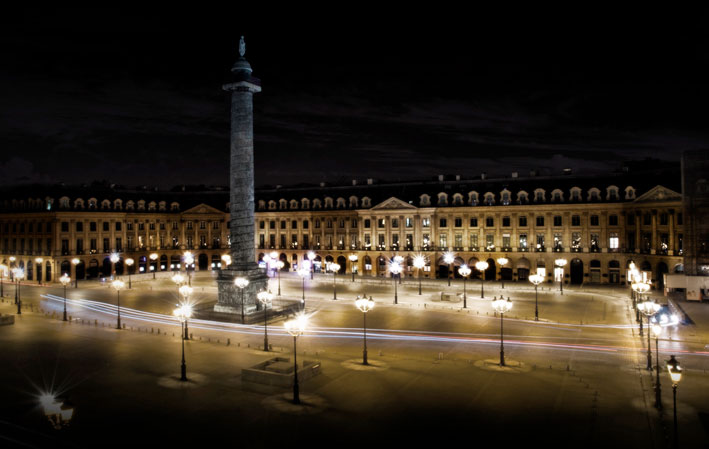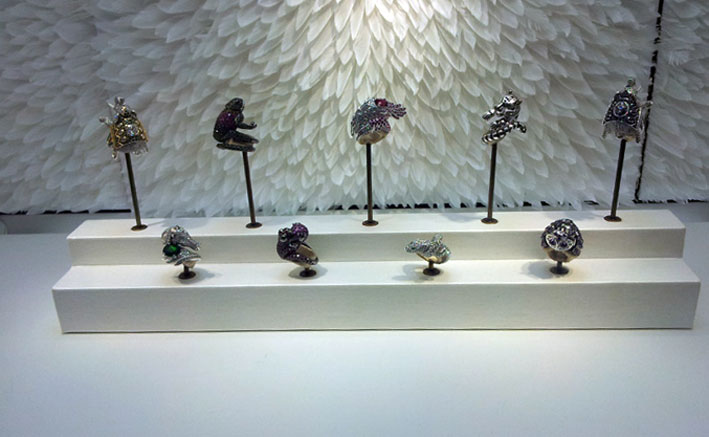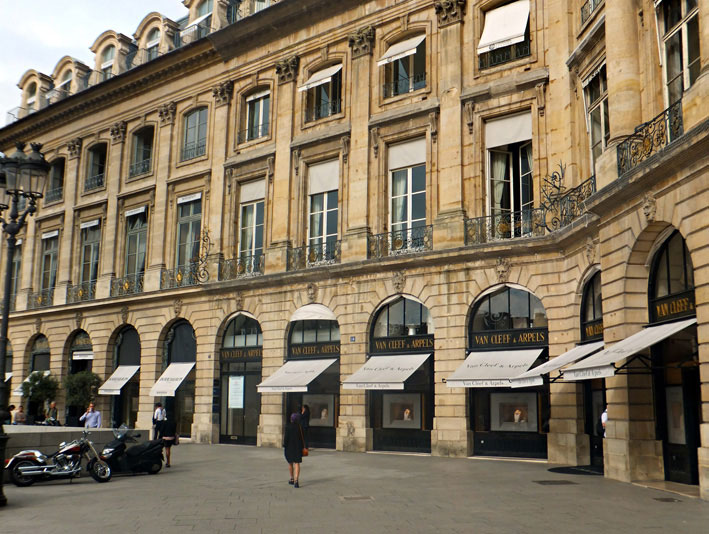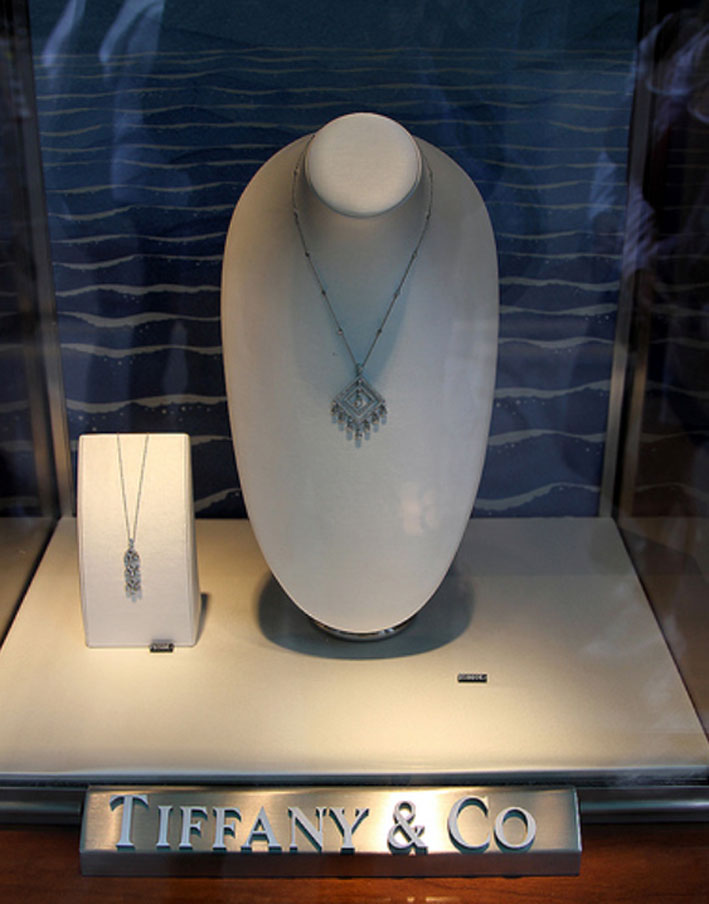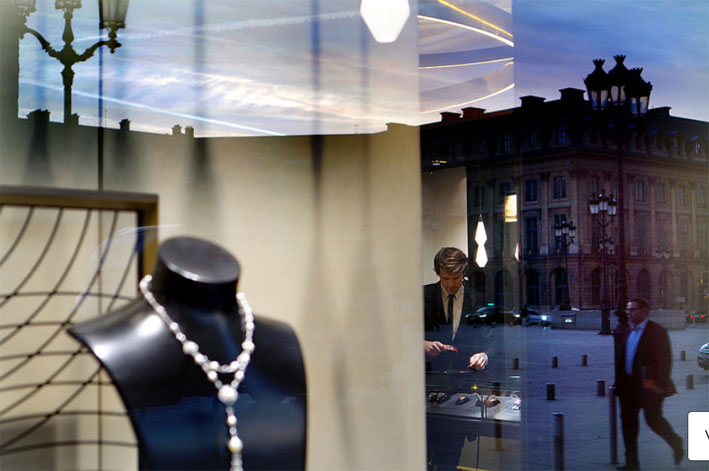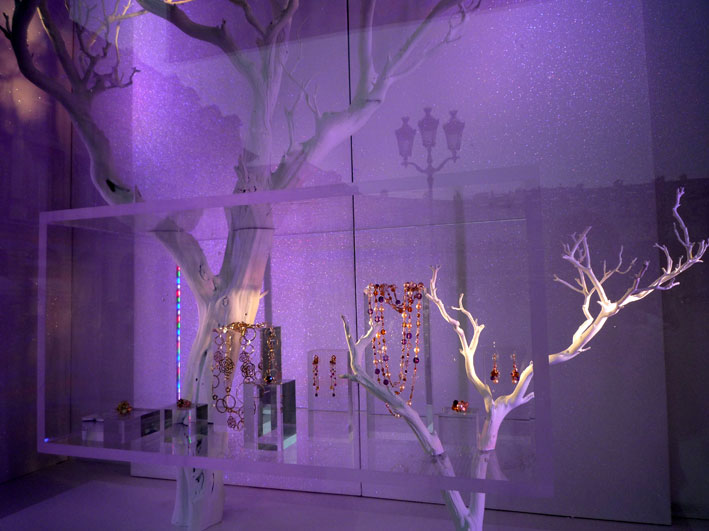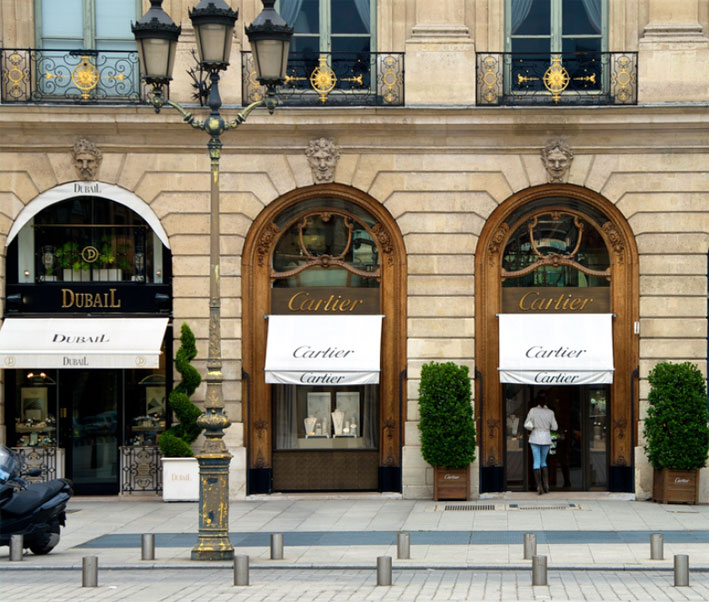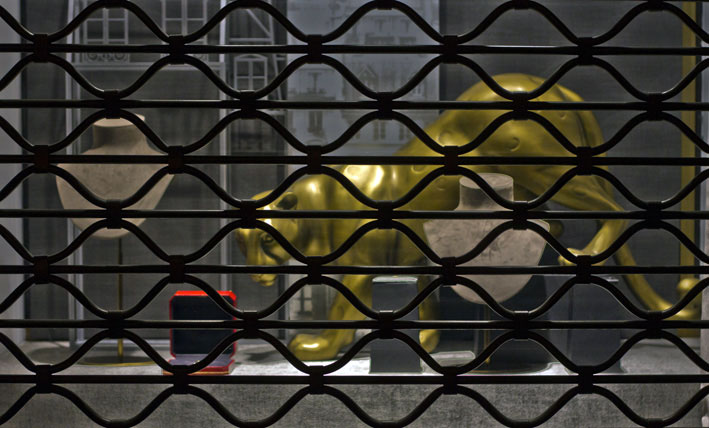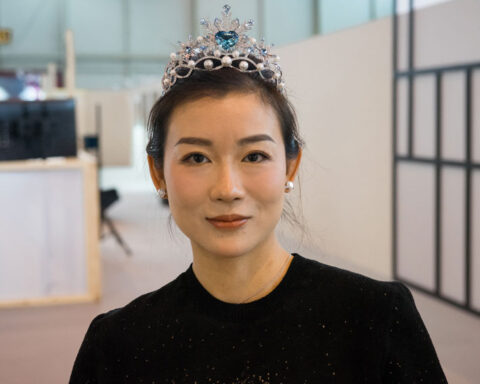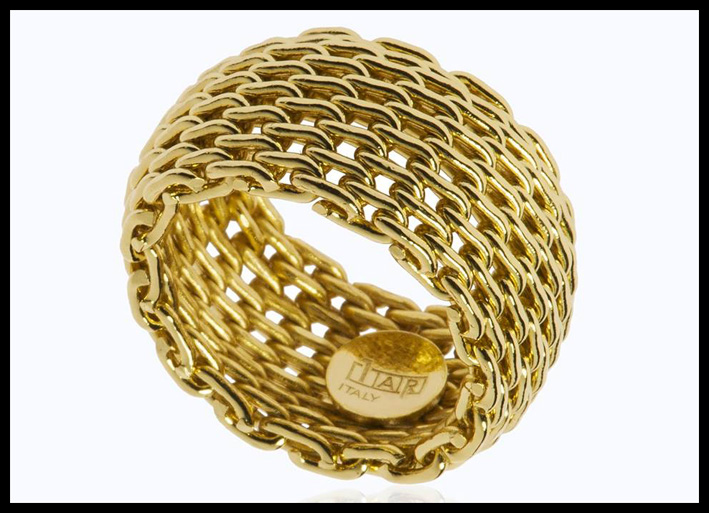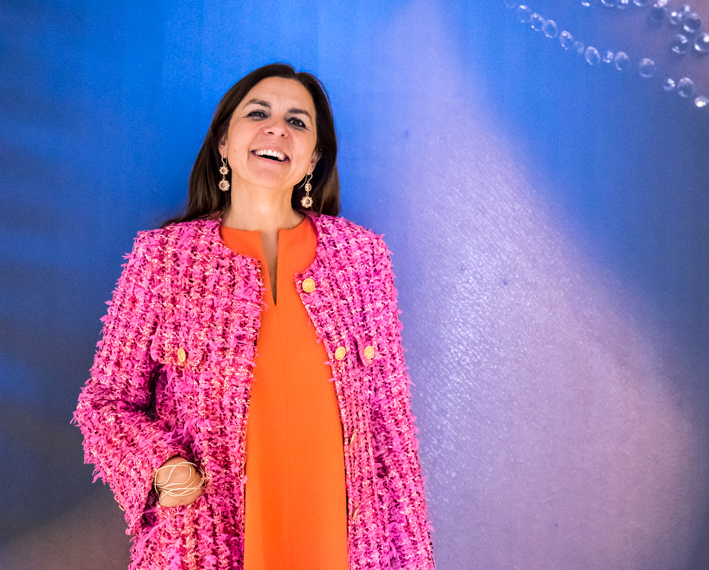Place Vendôme, one of the mythical places of jewelry. And also a vantage point to understand trends, including those of marketing, for an object so sophisticated and privileged as the result of the combination of passion, manual skills and artistic sensibility. Place Vendome is the virtual capital of the jewelry, which is overlooked by the windows of jewelers sometimes with a tradition centennial as Boucheron, Van Cleef & Arpels, Piaget and Cartier. And the Paris square is the starting point of a long investigation that the French newspaper Les Echos, dedicated to the world of jewelry. To understand what is the future and what are the new sales techniques. The article is signed by Sandrine Merle.
Secrets of jewelers
Beyond the beauty of their creations, jewelers struggle to convince their customers: new experiences, and showcases with iconic choreography. It’s their recipe for seduction. Buy jewelry that cost thousands, even millions of euro is not an ordinary act. The first challenge of the jewelers is to make buying an extraordinary experience. “Customers want to know where, how and why their jewelry are designed and manufactured,” says Pierre Rainero, director for the style of Cartier. (…)
By Harry Winston, Cartier and Piaget a piece of jewelry is also the result of a long history. Nothing better than a visit to the heart of the archives, drawings, orders, antique jewelry to understand the inspirations of Mellerio. In the Chaumet museum there are a thousand and one echo the work of artistic director, Claire must-Rakoff. As the apartment of Mademoiselle Chanel’s at Rue Cambon, speaks for itself, with camellias, lions and the 5, the lucky number of the designer. “This place is open only in exceptional cases,” says the director of jewelry, Benjamin Comar, reminiscent of other occasions such as parades, exhibitions and launch of Chanel’s collections. And the Bulgari customers still remember the fabulous dinner at the Baths of Caracalla in Rome. (…)
The stones, which cost exorbitant prices are a real investment, do not keep the “stoniness” shadows. Who travels the world in search of gems, can share with customer the emotions derived from these natural treasures. Lucia Silvestri for Bulgari, Thierry Robert for Boucheron, can tell them what is a combination, namely an assortment of stones by size or color, or inclusion, a defect that can also give an indefinable charm gem. Van Cleef & Arpels has had the idea of putting together all his experiences in his school, which opened in 2012. “We thought of a platform to extend our relationship with our customers,” says the president of the Maison, Nicolas Bos. There you can attend lessons of history or technique, taught by historians and experts. Customers thus become specialists who do not buy just a design or a sign of wealth. I am also aware of the work that goes into a piece of fine jewelry and will include the price. Then, they are more willing to wait a few months for the object of their mad desire.
Shines the eye
The experience may also take the form a priori more traditional and more open “to all new arrivals”: the shop windows. Today the cure is extreme. Now the windows look like small theatrical scenes in which we tell stories which can stir the imagination, surprise and encourage a stop in front of the glass. For Annie Beaumel, priestess of the showcase of Hermès (between 1927 and 1978), “should not be a display, but a work of imagination, whimsy, fantasy, colors.” “The difficulty lies in the disproportion between the size of the display case and jewelry,” says Soline d’Aboville of set designers preferred by jewelers. “The window shop is used to capture the attention from afar, while the jewel must be visible up close …”. The windows express more the story of a brand by introducing systematic recognition codes. The Red and the panther for Cartier. The lion, black and white, and the Chanel camellia. New York for Tiffany & Co. The environment of fashion for Dior.
Brand and symbols
For Louis Vuitton elements correspond to those that characterize the brand: the cloverleaf of fortune, the hot-air balloon or, more recently, the letter V. By Van Cleef & Arpels, are the Jules Verne tale: The voyages, the Skin Donkey, and ballet Les Bals de légende, in a firework of light, color and optical illusions. The look can not be separated by thousands of micro-details, from the texts with letters inspired by Gustave Doré. At Tiffany & Co., the windows are breathtaking. There are, for a couple of months, the jewels of the collection Gatsby Le Magnifique: they were presented on two hands holding each a glass of champagne, on a background of glass bubbles. Giant crystal chandeliers dominate the scene. These windows follow the tradition of Gene Moore, “the father of all the window dressers and visual merchandiser,” says Soline d’Aboville. Has built about 5 thousand for the American fashion house and was the first to introduce contemporary art. He finds himself in the windows shop the manual dexterity which is so dear to jewelers: are involved countless skills, as Christel Sadde, and furniture designer. He has created a set unusual and fascinating for Chaumet, with gold medals perforated. For its part, Mathilde Nivet works with paper, extremely popular material for jewelry. Fred, Mellerio, Bulgari, Chaumet: many have turned to the poetry of his work, to his ability to carve, bend, cut this material in feathers, flowers, castles.
The casket secret
Last secret, the attention to the packaging, which is part of the art of gift. It is at the center of a ceremony that serves to better savor the discovery. “It get euphoric, multiplies the mystery. It opens with pleasure and surprise,” say at Cartier. Which is recognizable at first sight. Famous for everyone, highlighted in red leather with decorative lace in gold, was part diu all advertising campaigns and all the windows. One packaging developed by the Maison Vuitton in 2001, when he started with the jewelry, it is equally recognizable: it takes the form of a canvas with the famous Monogram and is made in the laboratories of the house, in Asnieres.
A challenge, because the artisans capable of this work are now in danger. And the prices are astronomical: 2 thousand euro for the casket of a necklace, made of poplar wood and leather lining. For the designer Marie-Hélène de Taillac, it was still out of the question to move to the manufacture in Asia: “It is extremely important, their part in shaping the identity of the fashion house,” he says. His treasures are divided with skins of different colors and perfectly match the jewels and his shop: pink, green, purple, etc. All are designed to the last detail, with the favorite motifs shown on the edge. Inside, the color changes according to the one of the precious stones. Even the sound dull and sharp lid during its closure is designed …
In terms of creativity, anything is possible. Valerie Messika has designed a special environment for engagement rings. “The idea came to me when my husband gave me my ring, at night, on the beach,” he remembers, and describes the little black box that lights up when you open. Enough to give ideas to the great romantics. At Fred, a box has been specially designed for the ring Sugarloaf: different accommodations are possible for its removable stones. One of the most original ideas was, a few years ago, that of Solange Azagury-Partridge, then artistic director of Boucheron: a lined interior with dark mink, for fine jewelry. What better way to blend the brilliance of a jewel in the hundreds of thousands of dollars?
According to Julie Valade, director of the department of jewelry Artcurial, “in the case of a modern jewel, the packaging is a plus.” Especially if it is a jewel signed. The packaging of an old piece can also help determine the authenticity of the latter. For collectors, is a form of guarantee. “It can also be a source of many surprises …” said the jeweler Mellerio, which has just celebrated its 400th anniversary. In fact, the chests of the jewels of the nineteenth century often had secret doors that hid a pin, a pendant, a screwdriver or messages… intimate. Place Vendôme has not yet revealed all its secrets.
